Your employer is watching you! Almost all major businesses now use monitoring software to track workers’ keystrokes and web searches – with JP Morgan even checking time spent writing emails when they are IN the office
Most companies now use monitoring software to track employee activity during work hours, a new study finds. Several companies, such as JPMorgan, track and penalize employees even when they are in the office.
This is evident from a survey of about 1,000 business leaders across the country CVBuilder.com found that 96 percent of respondents who work at organizations with a remote or hybrid workforce say their company uses some form of employee monitoring software.
Only 10 percent of those companies did so before the pandemic, the survey found — while companies like Google, Amazon and Meta remain committed to a crackdown for not spending enough time in their offices.
After months of remote working, all three companies have since moved to hybrid models — while companies like X, formerly Twitter, have completely phased out remote working.
Data from ResumeBuilder shows that software that emerged during this shift — software used to block content, track keystrokes, and take screenshots of employees’ screens — is here to stay as staff are forced to work from the office more often.
In a survey of 1,000 business leaders in the US, ResumeBuilder.com found that 96 percent of respondents working at companies with a remote or hybrid workforce said their company used some form of employee monitoring software. Pictured: Employees work on the sports-themed 11th floor of the JPMorgan Chase office at 600 Travis, Tuesday, September 7, 2021 in Houston
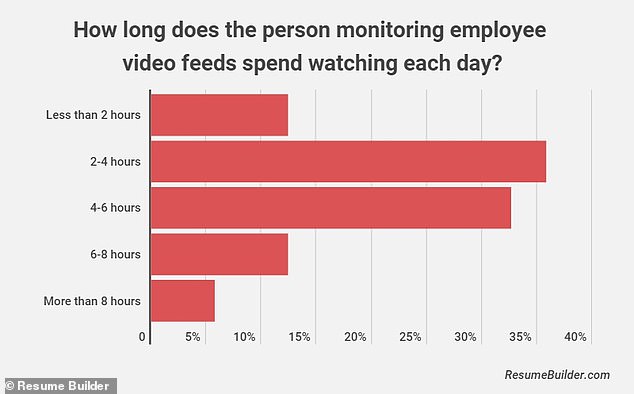
More than a third of business leaders surveyed said they require employees to be able to view live video feeds while working, both remotely and in the office.
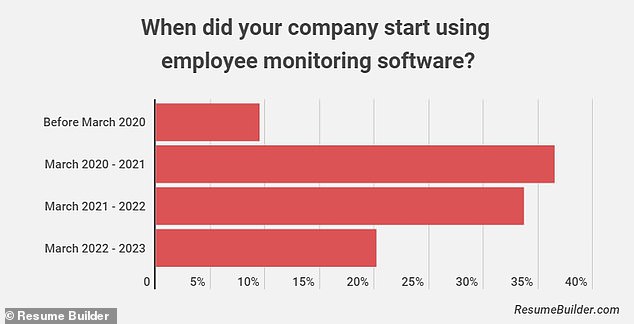
Only 10 percent of those companies did so before the pandemic, the survey found — as companies like Google, Amazon and Meta continue to engage in crackdowns for not spending enough time in their offices.
“It is clear from our research that there are still organizations struggling to manage their workforce in the wake of the pandemic,” said Stacie Haller, the site’s Chief Career Advisor, of the larger cultural and societal implications of the study.
“The focus on hours worked versus actual productivity and the successful completion of on-time projects seems to reflect the challenges management teams face when it comes to adapting the way they interact with remote workers.”
For example, JPMorgan’s monitoring system tracks office attendance and time spent composing emails, according to several reports and personal accounts.
In ResumeBuilder’s survey, 63 percent of companies surveyed said they strongly believe that introducing such software would help increase productivity – indicating that public opinion is still somewhat divided on the issue.
It also shows that such surveillance, previously applied almost exclusively to remote workers, is becoming increasingly common in the workplace, where office attendance and productivity remain an issue.
For example, Apple uses employee badges to track whether employees come to the office three days a week, and issues “escalating alerts” to employees if they fail to meet personal work requirements.
The practice has reportedly been around since March, three months after the Cupertino-based company withdrew policies requiring COVID-19 testing before going into business in person.
The company, like most others, transitioned exclusively to remote working during the pandemic, but changed its policies last August in response to changing COVID-19 data.
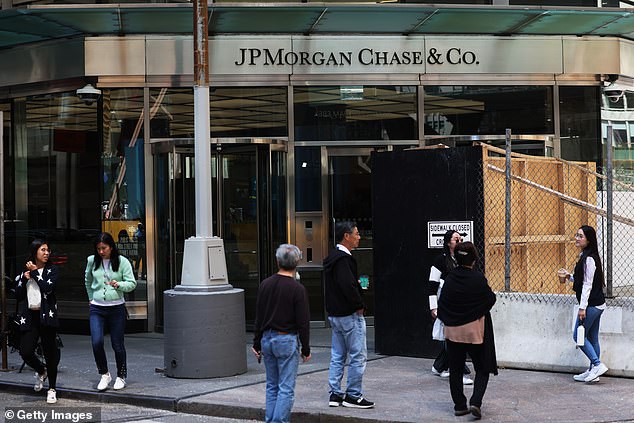
For example, JPMorgan’s monitoring system tracks office attendance and time spent composing emails, according to several reports and accounts.
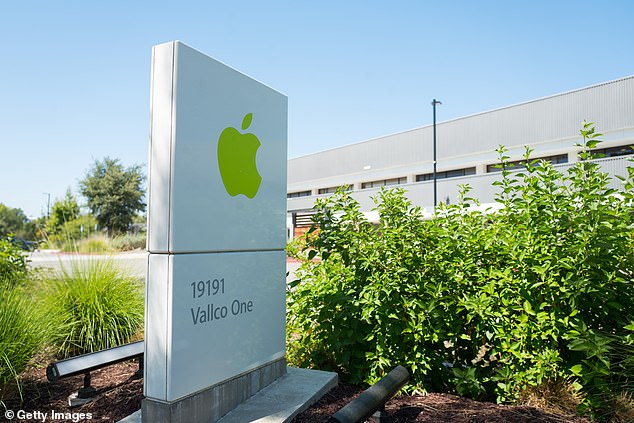
For example, Apple uses employee badges to track whether employees come to the office three days a week, and issues “escalating alerts” to employees if they fail to meet in-person work requirements.
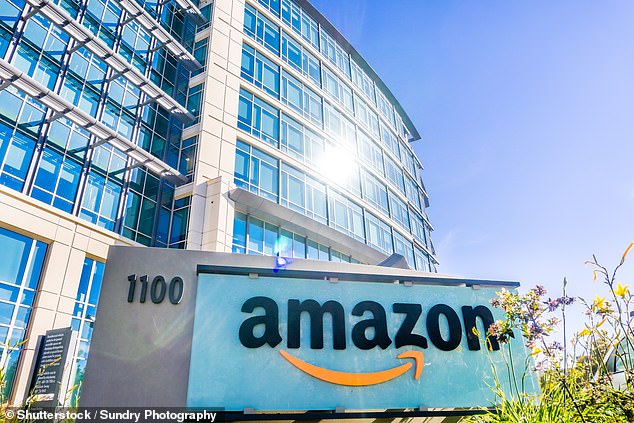
A slew of others have since followed suit, with Silicon Valley-based Amazon ordering its corporate staff to return to work at least three days a week in May.

Meta, the most recent to participate, issued an almost identical mandate on Tuesday
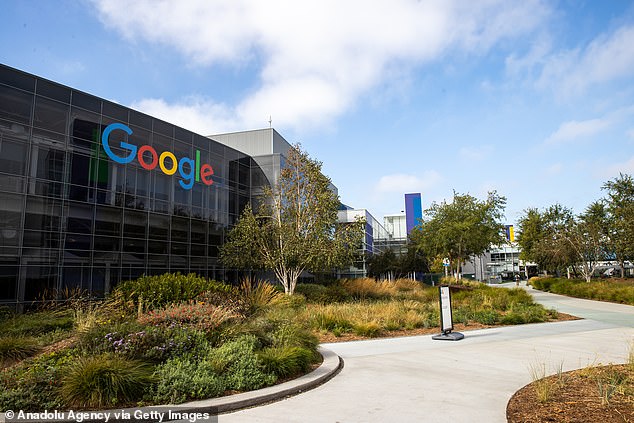
Another former staunch supporter of remote Google has also said that employees who don’t work in the office for at least three days a week could see their performance ratings affected – while others, such as Meta and Amazon, simply said employees are at risk of resigning.
The plan started with Apple demanding physical work one day a week, but gradually expanded to two days, and last September to three.
A slew of others have since followed suit, with Silicon Valley-based Amazon ordering its corporate staff in May to return to work at least three days a week, and Meta issuing an almost identical mandate on Tuesday.
Both are as strict as Amazon’s and Apple’s guidelines – all of which are enforced through constant monitoring by managers and company-driven attendance.
Another former staunch proponent of distancing at Google has also said that employees who don’t work in the office at least three times a week could see their performance ratings affected – while others, such as Meta and Amazon, simply said employees are at risk of being laid off.
Some of these companies — including Meta — allow employees hired into fully remote positions, or those already approved for fully remote work, to continue working as such.
Yet, as ResumeBuilder’s research shows, companies are increasingly looking at ways to get workers back to the office — and the surveillance methods that emerged during the pandemic have emerged as a way to enforce them.
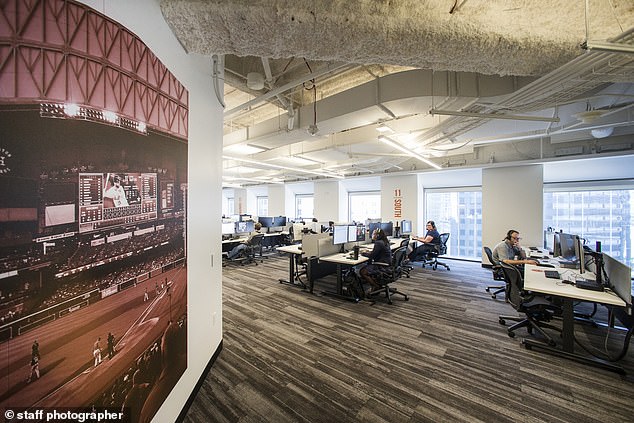
The results of the study showed how companies are increasingly looking for ways to get employees back to the office – and some of the surveillance methods used to enforce it. Pictured: Employees work on the sports-themed 11th floor of the JPMorgan Chase office at 600 Travis, Tuesday, September 7, 2021 in Houston
The vast majority of business executives surveyed in the study said their companies used some form of software to monitor employees — whether blocking content, tracking keystrokes, or taking random screenshots of the employee screens.
More than a third of those surveyed said they require employees to be able to view live video while working, both remotely and in the office.
In terms of enforcement, it found that roughly three in four companies fired employees because of the monitoring software, while seven in ten said they had employees leave because they did not want to be subject to such monitoring.
In terms of opinions on whether such practices work, an overwhelming 97 percent said the software has increased productivity.
Meanwhile, only 1 in 10 admitted that the monitoring software is being used to encourage employees to return to the office.
